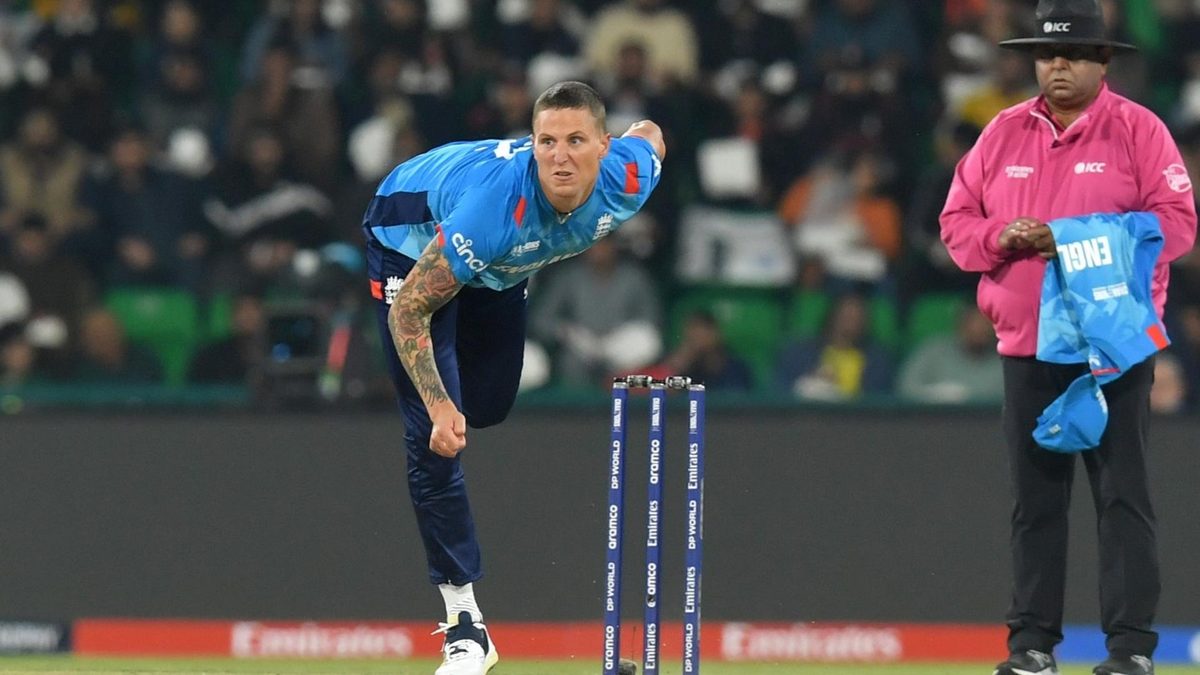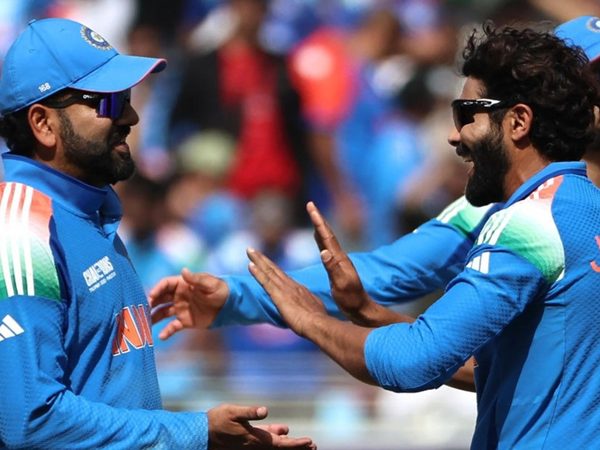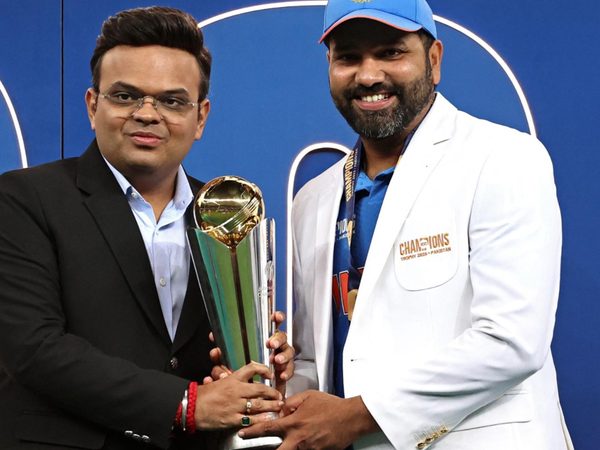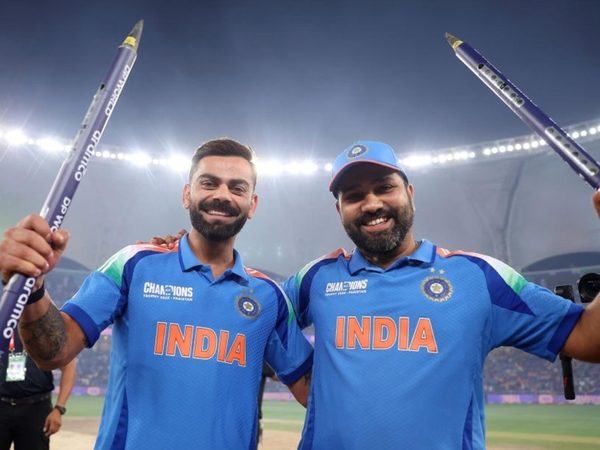
If you’re looking for a direction in which to point a finger in the wake of England’s Champions Trophy defeat to Australia, then, of those on the field, Brydon Carse stands out as the most obvious culprit.
The numbers aren’t pretty, and neither was much of the bowling. Carse finished with 1-69 from his seven overs - only once before has a bowler had a worse economy rate in a Champions Trophy spell. This despite being introduced with Australia two down and looking to rebuild and largely bowling in the middle overs thereafter. His first ball was on the pads and whipped for four, a regular feature throughout the innings. Meanwhile, the short ball, the weapon which has had Carse touted as a possible Liam Plunkett replacement, lacked venom on a true pitch, and was regularly pulled over the leg-side. By the end, he was being scooped for six by an imperious Josh Inglis, Australia having achieved total control of the highest chase in tournament history.
But this isn’t really about Carse, just as it wasn’t really about Gus Atkinson, who endured a similarly chastening spell as India racked up 356 to seal a clean sweep in the series that preceded the Champions Trophy. While Atkinson is 27 and Carse 29, in 50-over terms the pair are infants, forced to learn on the job on the biggest stages. Just nine of Carse’s 30 List A appearances have come when not wearing an England shirt. For Atkinson, the number is two out of 13.
Brydon Carse is struggling with a blister on his left toe and may be ruled out for the rest of the Champions Trophy.
— Wisden (@WisdenCricket) February 24, 2025
Read here ➡️https://t.co/ZI4FCp0KtP pic.twitter.com/cwDto4Nfix
The wider structural reasons for this are greatly discussed, and whatever the rights and wrongs of the decisions that have put England’s new players in this position, there is little that can be done to change the reality of their inexperience in the near or even medium term. These are the players Brendon McCullum has. The success or otherwise of his tenure as white-ball coach will be determined in large part by whether he can nurture them into top-level white-ball bowlers.
Perhaps it’s true that there’s no such thing as bad exposure, but it’s hard not to shake the feeling that games such as Carse had against Australia won’t help his development, and certainly they don’t help England’s short-term prospects. And how they have their side set up is leaving them exposed. When Jacob Bethell’s injury saw Tom Banton added to England’s squad, the focus was more on the narrative of his return than on the change to team make-up that his inclusion necessitated, with Liam Livingstone pushed down to No.7 and Jamie Overton slipping out of the side.
This is the short blanket theory in effect, where however you arrange your side, you’ll always leave something not fully covered. Pack your batting to guarantee you’ll get a big total, and you might find yourself light of the bowling to defend it. But if you pick the bowlers to cover every base and ace every match-up, you’ll leave yourself vulnerable to a match-losing collapse. England have chosen to go batting-heavy, and it’s costing them. Livingstone is a canny, multi-faceted operator, but him as England’s fifth bowler, alongside at least one inexperienced seamer with only Joe Root as cover, feels threadbare. When a bowler has an off-day, the gaps are there for all to see.
Liam Livingstone believes England didn’t deserve to lose their Champions Trophy 2025 opener against Australia.
— Wisden (@WisdenCricket) February 24, 2025
Agree with him? 🤔
Read here ➡️ https://t.co/hKGQylNzQQ pic.twitter.com/279zkGL1fI
Nasser Hussain is right in pointing out the impact of the absence of Ben Stokes, but given his ongoing fitness issues and the precedence Test cricket will take place in his career from here on, they may as well bemoan the fact that Ian Botham or Andrew Flintoff aren’t available. There are options outside the squad, with Sam Curran or Liam Dawson two bowling all-rounders currently out of favour who could slot in at No.7. But this is as much a decision of philosophy as it is of personnel.
The decision to promote Jamie Smith to No.3, in place of Banton and above of Joe Root, is emblematic of this. Jos Buttler called it “a free hit” and Smith treated it as such. From his 10th ball onwards, Smith tried nothing but hitting boundaries. Twice he connected sweetly. Once he just cleared Alex Carey at mid-on. Then he picked him out, the warning unheeded. This is all, of course, exactly as McCullum likes it. All out attack and all in on his players, rather than hedging his options and planning for poor performance. Including a release valve bowling option would be anathema to a man who likes to keep up the pressure at all times, and would lessen the licence of those at the top to go as hard as they please.
Looking objectively at where England’s strengths lie, they have one of the most consistent ODI batters ever in Root, another in Ben Duckett who can be relied upon to contribute and go big, and a captain in Buttler who can take on any role ascribed to him. Putting a bit more weight on them in order to take a bit off the likes of Carse and Atkinson feels like a sensible compromise. Whether McCullum will see it that way is a different matter.
Follow Wisden for all cricket updates, including live scores, match stats, quizzes and more. Stay up to date with the latest cricket news, player updates, team standings, match highlights, video analysis and live match odds.








